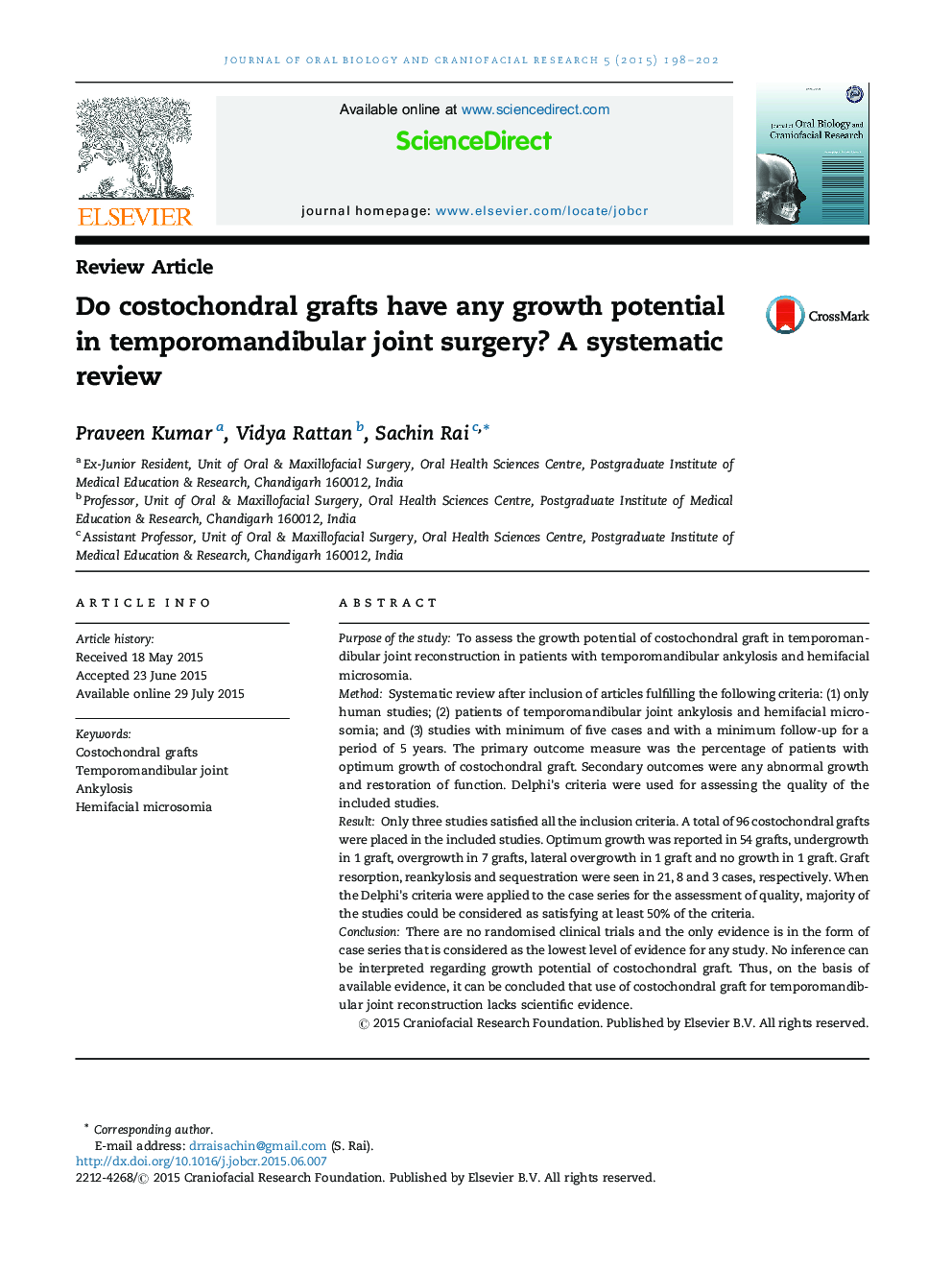| Article ID | Journal | Published Year | Pages | File Type |
|---|---|---|---|---|
| 3155200 | Journal of Oral Biology and Craniofacial Research | 2015 | 5 Pages |
Purpose of the studyTo assess the growth potential of costochondral graft in temporomandibular joint reconstruction in patients with temporomandibular ankylosis and hemifacial microsomia.MethodSystematic review after inclusion of articles fulfilling the following criteria: (1) only human studies; (2) patients of temporomandibular joint ankylosis and hemifacial microsomia; and (3) studies with minimum of five cases and with a minimum follow-up for a period of 5 years. The primary outcome measure was the percentage of patients with optimum growth of costochondral graft. Secondary outcomes were any abnormal growth and restoration of function. Delphi's criteria were used for assessing the quality of the included studies.ResultOnly three studies satisfied all the inclusion criteria. A total of 96 costochondral grafts were placed in the included studies. Optimum growth was reported in 54 grafts, undergrowth in 1 graft, overgrowth in 7 grafts, lateral overgrowth in 1 graft and no growth in 1 graft. Graft resorption, reankylosis and sequestration were seen in 21, 8 and 3 cases, respectively. When the Delphi's criteria were applied to the case series for the assessment of quality, majority of the studies could be considered as satisfying at least 50% of the criteria.ConclusionThere are no randomised clinical trials and the only evidence is in the form of case series that is considered as the lowest level of evidence for any study. No inference can be interpreted regarding growth potential of costochondral graft. Thus, on the basis of available evidence, it can be concluded that use of costochondral graft for temporomandibular joint reconstruction lacks scientific evidence.
